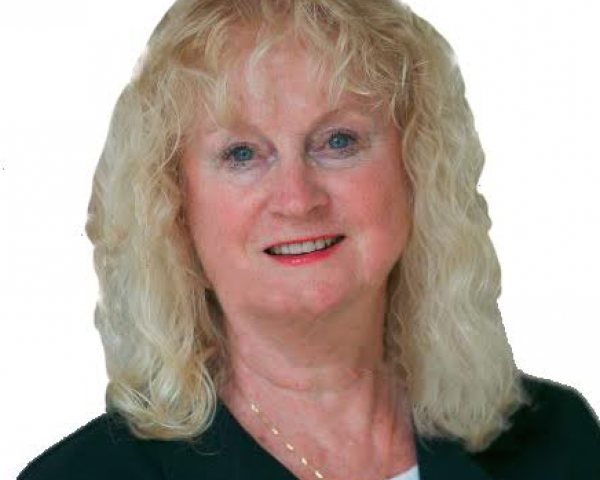Potential Risks of Illicit Drug Residue
With the opioid crisis, adjusters need to keep safety top of mind while inspecting a drug-related claim.

With the opioid crisis, adjusters need to keep safety top of mind while inspecting a drug-related claim.

Get Involved
Our authors are what set Insurance Thought Leadership apart.
|
Partner with us
We’d love to talk to you about how we can improve your marketing ROI.
|
Two bills in Congress may resolve issues restricting insurance of marijuana-related businesses, or MRBs.

Get Involved
Our authors are what set Insurance Thought Leadership apart.
|
Partner with us
We’d love to talk to you about how we can improve your marketing ROI.
|

We have been telling everyone who would listen for a long time that the future of the insurance industry will be dictated, not by the insurers, but by the clients. We have also been telling you that this reorientation will manifest itself first on the commercial side of things, if for no other reason than the greater bargaining power of the customer. Sure enough, Willis Towers Watson announced last week an innovative risk advisory service that very much looks at the world through corporate clients' eyes.
Of course, Willis is not the only organization moving in this strategic direction. We know of at least one large broker that is actually ahead in its thinking. But it's still worth looking at the implications of the Willis program, which helps risk decision-makers (usually risk managers or CFOs) manage risk more effectively, balancing retained and transferred risks to reduce companies' total cost of risk.
I have heard from a lot of risk managers that they would like their role within their organizations to be elevated. They would like to be part of strategic decision-making, forging the organization's risk profile. Well, as the Willis program shows, here's your chance.
The key to the future of risk management is that risk has always been viewed as an expense or a liability but, because of technology, will start to feed into opportunities on the top line of a company's financial statement. Basically: Yes, there will be a risk if we attempt X, but we can be smart and mitigate risk by doing Y. The numbers for X now look a lot better, so let's go ahead with it—and watch sales climb.
Risk management can become strategic if managers find ways to enable projects that can drive revenue. We have seen more than a few examples of this. The benefits are not fractional; they are measured in multiples, as in P/E multiples that make the stock market amplify the gains.
From the standpoint of brokers like Willis, the needs are pretty straightforward: They need to become better at identifying technology advances that are important for clients, to stay ahead of their broker competitors, and will need to consult more with clients while selling products less. There will, of course, be some transition required in the business models, because consultants don't get paid a commission on premium. New pay arrangements will need to be figured out.
From the internal risk manager standpoint, the situation will be more complicated. Even though many risk managers say they want to take a more strategic role in their organization, they may be reluctant to stick their necks out. (No jokes needed about being risk-averse.) Just look at all the RMs that have sprung up over the years—ERM (enterprise risk management), SRM (strategic risk management), IRM (integrated risk management) and maybe more—without causing the sort of major shift in role that many have predicted.
There isn't always an appetite among senior management for more input by risk managers, either. Our friend Chris Mandel, an SVP at Sedgwick who is one of the world's ranking authorities on risk management, says input is requested on the most destructive exposures, so requests for strategic advice are scattershot. But the needs are there among senior management, and aggressive risk managers can spot and fill those needs. (Chris offers more thoughts on risk management opportunities in a podcast I did with him earlier this year.)
Clients will, of course, continue to work on reducing their traditional, internal risks, and technology will help there, too. For instance, many companies have learned the hard way that they had more cyber exposures than they realized—the sort of thing that technology can track. Reducing the number and severity of claims will, at least eventually, lead to lower premiums. But the days where the risk management game was based on ratings and recovery are numbered, and the days of prediction and prevention are fast coming. The new game will be won by those in the industry that can help clients switch from a focus on reducing losses to enabling growth.
Those companies that embrace the notion of risk as a value driver will see exponential gains in enterprise value, and those of us in the insurance industry need to enable those gains. It's all about the clients, not the insurance.
Wayne Allen
CEO
Get Involved
Our authors are what set Insurance Thought Leadership apart.
|
Partner with us
We’d love to talk to you about how we can improve your marketing ROI.
|

Insurance Thought Leadership (ITL) delivers engaging, informative articles from our global network of thought leaders and decision makers. Their insights are transforming the insurance and risk management marketplace through knowledge sharing, big ideas on a wide variety of topics, and lessons learned through real-life applications of innovative technology.
We also connect our network of authors and readers in ways that help them uncover opportunities and that lead to innovation and strategic advantage.
... we can develop more women leaders. But women and men have to make the "giant leap for mankind" together.

Get Involved
Our authors are what set Insurance Thought Leadership apart.
|
Partner with us
We’d love to talk to you about how we can improve your marketing ROI.
|
With the creation of an HRA in 2016 and two new HRAs on the horizon, it’s a good time to look forward to what’s in store next year.

The health reimbursement arrangement (HRA) is having quite a moment. After being seriously reduced by IRS guidance following the Affordable Care Act, they’ve reentered the scene as a serious option—particularly for small businesses. With the creation of an HRA in 2016 and two new HRAs on the horizon, it’s a good time to look forward to what’s in store next year.
In this post, we’ll cover everything you need to know about HRAs in 2020. That includes whether your business should consider one, which HRA options will be available, how any HRA rules might change and what’s happening with federal proposals to create two brand-new HRAs in 2020. Let’s dive in.
Will HRAs be a good option in 2020?
HRAs have always been a good option for businesses that struggle with group health insurance costs. As access to these benefits expand, more and more businesses can consider them as a viable alternative. This will continue to be true in 2020. The underlying causes of rising health care costs haven’t been addressed, and group health insurance rates will continue to increase while small businesses struggle to meet them.
With the availability of the qualified small employer HRA (QSEHRA) firmly in place—and two new HRAs set to become available in 2020)—small businesses will have a way to control their budgets while offering a formal benefit to employees. What’s more, the individual market will continue to stabilize, with more insurance carriers returning to and entering public marketplaces. This makes for a fertile field of options for employees who will be shopping for their own policies during the 2020 open enrollment period.
What HRAs will definitely be available in 2020?
While federal proposals recommend creating two HRAs in 2020, the list of confirmed HRAs for the year remains the same as it was in 2019. They include:
If the proposed federal regulations are affirmed in a final rule, we also expect to see two additional HRAs become available to businesses of all sizes.
See also: North Carolina’s Battle for Healthcare Value
Will any details about these HRAs change?
The group coverage HRA, one-person stand-alone HRA and retiree HRA will all function in the same way in 2020 as they did in 2019. Some details regarding the QSEHRA will change, though.
First, annual contribution amounts will change. Every year, the IRS reexamines the maximum amount businesses can contribute to employees through the QSEHRA based on cost-of-living adjustments. In 2019, these amounts are $5,050 per single employee and $10,450 per employee with a family. The 2020 allowance amounts, which we expect to be released in October or November, will be higher.
Second, if federal proposals on HRA changes go forward, we’ll see new enrollment opportunities for employees with a QSEHRA. Right now, becoming newly eligible for a QSEHRA is not a qualifying life event that entitles an employee to a special enrollment period. Instead, the employee must wait until open enrollment season to shop for and purchase an individual health insurance policy. With these new guidelines, that will change. If the proposals are enacted in 2020, employees who gain access to a QSEHRA will be able to claim a qualifying life event, which opens a 60-day special enrollment period.
Can we expect new HRAs in 2020?
In October, the departments of the Treasury, Labor and Health and Human Services released proposed regulations that would expand access to HRAs. The most exciting development in the proposals is the creation of two HRAs: the individual coverage HRA (ICHRA) and the excepted benefit HRA. With the ICHRA, businesses of any size could offer an HRA to employees as a stand-alone benefit. Unlike the QSEHRA, the ICHRA would have no annual contribution caps, and businesses could choose to define eligibility and allowance amount by nine different employee classes. The excepted benefit HRA would also be available to businesses of any size. Those offering the HRA could reimburse employees up to $1,800 per year for excepted benefits, including dental and vision expenses.
The regulations suggest an implementation date for both the ICHRA and the excepted benefit HRA of Jan. 1, 2020. However, the final rule that would solidify this start date has yet to arrive. In the meantime, insurance carriers and state insurance departments have been lobbying the departments to push the start date back to 2021 or later. They argue that, because HRAs would allow a significant number of new people onto the individual market, the HRAs could affect their risk pools and the way they structure pricing. Because rates for the 2020 individual market have already been filed, they argue, it would be unnecessarily risky to introduce the new HRAs next year.
See also: How to Optimize Healthcare Benefits
While we expect the ICHRA and the excepted benefit HRA to become available eventually, we can’t say for certain that they’ll be available in 2020. Subscribe to our blog or check back here frequently to stay updated on all your HRA options for next year.
Conclusion
As in years past, interest in HRAs as a stand-alone health benefit is increasing. In 2020, the HRA will be a great choice for businesses committed to providing health benefits but concerned about cost. With four strong HRA choices definitely available in 2020 and two more potential candidates, HRAs are poised to help thousands of businesses offer strong health benefits to employees.
For more information about HRAs, check out PeopleKeep’s HRA education page.
Get Involved
Our authors are what set Insurance Thought Leadership apart.
|
Partner with us
We’d love to talk to you about how we can improve your marketing ROI.
|
The next evolution is quickly approaching, moving us into an era of fully integrated experiences for regulated services.

Get Involved
Our authors are what set Insurance Thought Leadership apart.
|
Partner with us
We’d love to talk to you about how we can improve your marketing ROI.
|

Aly Dhalla is the CEO/co-founder of Finaeo, a venture-backed insurtech startup that is reshaping insurance distribution to help independent advisers thrive in a digital era.
Climate and changes in housing stock are driving a move to non-standard insurance, enabled by two major technology trends.

Get Involved
Our authors are what set Insurance Thought Leadership apart.
|
Partner with us
We’d love to talk to you about how we can improve your marketing ROI.
|
It is a challenge to create the five-question, two-minute online experience that many are striving for in other lines. Customers feel no sympathy.

Get Involved
Our authors are what set Insurance Thought Leadership apart.
|
Partner with us
We’d love to talk to you about how we can improve your marketing ROI.
|

Karen Pauli is a former principal at SMA. She has comprehensive knowledge about how technology can drive improved results, innovation and transformation. She has worked with insurers and technology providers to reimagine processes and procedures to change business outcomes and support evolving business models.
While catered meals and an open office are appealing, it’s open communication, growth potential and team dynamics that keep good employees.

Get Involved
Our authors are what set Insurance Thought Leadership apart.
|
Partner with us
We’d love to talk to you about how we can improve your marketing ROI.
|

Mike de Waal is senior vice president of sales at Majesco.
Many are rushing into the space or redoubling their efforts and focusing on small commercial, so it is hyper-competitive.

Get Involved
Our authors are what set Insurance Thought Leadership apart.
|
Partner with us
We’d love to talk to you about how we can improve your marketing ROI.
|

Mark Breading is a partner at Strategy Meets Action, a Resource Pro company that helps insurers develop and validate their IT strategies and plans, better understand how their investments measure up in today's highly competitive environment and gain clarity on solution options and vendor selection.